Concrete countertops have become increasingly popular in recent years due to their durability, versatility, and unique aesthetic appeal. While concrete countertops are often left in their natural state, painting them can offer a whole new range of possibilities for customization and style. Painting concrete countertops allows homeowners to achieve a variety of looks, from sleek and modern to rustic and industrial. This process involves several steps and requires specific materials and techniques to ensure a long-lasting and beautiful finish.
First, it’s important to thoroughly clean the concrete surface. Any dirt, grease, or stains must be removed to ensure proper adhesion of the paint. This can be done using a mixture of water and mild detergent, followed by a thorough rinse. For tougher stains, a concrete cleaner or degreaser might be necessary. Once cleaned, the surface should be allowed to dry completely, which can take several hours or even a full day, depending on the climate and humidity levels.
Next, any cracks or imperfections in the concrete should be repaired. This can be done using a concrete patching compound, which should be applied according to the manufacturer’s instructions. After the patching compound has dried, the entire surface should be sanded to create a smooth, even surface. This step is crucial for achieving a professional-looking finish, as any bumps or rough spots will be visible through the paint.
Once the surface is prepared, it’s time to apply a primer. A primer is essential for ensuring that the paint adheres properly to the concrete and provides a uniform base color. There are primers specifically designed for use on concrete, which should be chosen for this project. The primer should be applied in a thin, even coat using a brush or roller, and allowed to dry completely before proceeding to the next step. This can take several hours, so it’s important to plan accordingly.
After the primer has dried, the first coat of paint can be applied. There are many types of paint that can be used on concrete countertops, including acrylic, epoxy, and latex. Each type has its own benefits and drawbacks, so it’s important to choose the one that best suits your needs and preferences. Acrylic paint is water-based, easy to clean up, and dries quickly. Epoxy paint is extremely durable and resistant to stains and chemicals, but can be more challenging to apply. Latex paint is also water-based and easy to use, but may not be as durable as epoxy.
When applying the paint, it’s best to use a brush or roller designed for use on smooth surfaces. This will help to achieve a uniform finish and avoid brush marks or roller lines. The paint should be applied in thin, even coats, allowing each coat to dry completely before applying the next. Depending on the color and type of paint, two to three coats may be necessary to achieve full coverage and the desired look.
After the final coat of paint has dried, a clear sealer should be applied to protect the surface and enhance the durability of the finish. There are several types of sealers available, including polyurethane, epoxy, and acrylic. The sealer should be applied in a thin, even coat, and allowed to dry completely between coats. Depending on the type of sealer, two to three coats may be necessary. This step is crucial for ensuring that the painted surface is resistant to stains, scratches, and other damage.
Once the sealer has dried, the countertop should be allowed to cure for several days before use. During this time, it’s important to avoid placing any objects on the surface or exposing it to water or other liquids. This will ensure that the paint and sealer have fully hardened and are ready to withstand everyday use. Proper curing is essential for achieving a long-lasting and durable finish.
In addition to these basic steps, there are several techniques that can be used to achieve different looks and finishes. For example, a faux marble finish can be created by using multiple colors of paint and a natural sea sponge to create a veined effect. A distressed or antiqued look can be achieved by sanding the edges and corners of the countertop after painting, or by using a glaze to add depth and dimension. These techniques require some practice and experimentation, but can result in a truly unique and customized look.
It’s also possible to add decorative elements to painted concrete countertops, such as stencils, decals, or metallic accents. These can be applied after the paint has dried, but before the sealer is applied. This allows for endless possibilities for personalization and creativity. When using stencils or decals, it’s important to ensure that they are firmly adhered to the surface to prevent paint from bleeding underneath. Metallic accents can be added using metallic paint or leafing, and should be sealed to protect them from tarnishing or damage.

One of the benefits of painting concrete countertops is that it can be a relatively inexpensive way to update the look of your kitchen or bathroom. Compared to replacing the countertops entirely, painting can be a cost-effective solution that still provides a fresh and modern look. It’s also a project that can be completed over a weekend, making it a great option for DIY enthusiasts.
However, it’s important to keep in mind that painted concrete countertops do require some maintenance. The surface should be cleaned regularly using a mild detergent and soft cloth to avoid scratching the paint or sealer. Harsh chemicals or abrasive cleaners should be avoided, as they can damage the finish. It’s also a good idea to use cutting boards and trivets to protect the surface from scratches and heat.
Despite the maintenance requirements, painted concrete countertops can provide a beautiful and durable surface that enhances the overall look and feel of your space. With proper preparation, application, and care, a painted concrete countertop can last for many years and continue to look great. Whether you’re looking to create a sleek and modern look or a rustic and industrial aesthetic, painting your concrete countertops can be a rewarding and satisfying project.

Common Mistakes to Avoid:
One of the most common mistakes when painting concrete countertops is failing to properly prepare the surface. Skipping steps such as cleaning, repairing, and sanding can result in poor adhesion of the paint and an uneven finish.
Another mistake is using the wrong type of primer or paint. It’s essential to choose products specifically designed for use on concrete to ensure durability and longevity. Applying paint or sealer too thickly can also cause issues, such as bubbling or peeling. It’s better to apply multiple thin coats, allowing each to dry completely before proceeding.
Additionally, not allowing sufficient curing time before using the countertop can lead to damage and premature wear. Rushing through the process may save time initially, but can result in a less durable and less attractive finish in the long run.
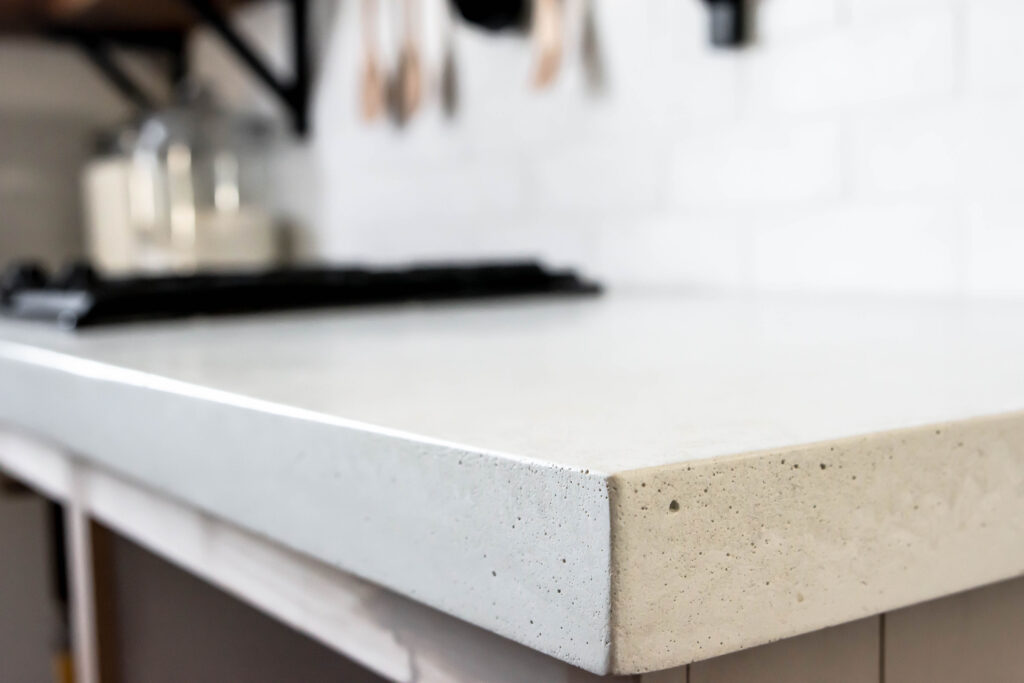
How long does it take to paint concrete countertops?
The process of painting concrete countertops can take several days to a week, depending on the drying and curing times of the products used. Cleaning and repairing the surface can take a day, followed by applying primer and multiple coats of paint and sealer, each requiring several hours to dry. Allowing sufficient curing time before using the countertop is also crucial, which can add a few more days to the process.
What type of paint is best for concrete countertops?
The best types of paint for concrete countertops are acrylic, epoxy, and latex. Acrylic paint is water-based, easy to clean up, and dries quickly. Epoxy paint is extremely durable and resistant to stains and chemicals but can be more challenging to apply. Latex paint is also water-based and easy to use but may not be as durable as epoxy. Choosing the right type depends on your specific needs and preferences.
Can I paint over an existing concrete countertop, or do I need to remove the old finish first?
You can paint over an existing concrete countertop, but it’s crucial to properly prepare the surface. This includes cleaning, repairing any cracks or imperfections, and sanding to create a smooth surface. If the existing finish is in good condition and not peeling or flaking, it can be painted over after applying a suitable primer.
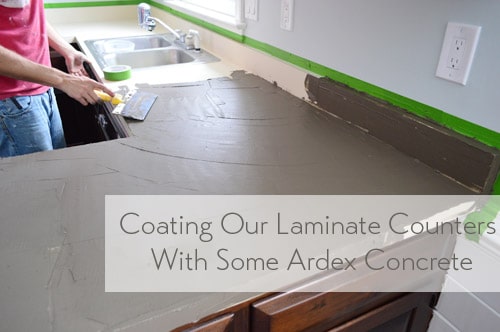
How do I maintain painted concrete countertops?
Painted concrete countertops require regular cleaning with a mild detergent and soft cloth to avoid scratching the paint or sealer. Harsh chemicals or abrasive cleaners should be avoided. Using cutting boards and trivets can protect the surface from scratches and heat. Periodically, it may be necessary to reapply a clear sealer to maintain the durability and appearance of the finish.
Is it possible to achieve a custom look with painted concrete countertops?
Yes, painting concrete countertops offers endless possibilities for customization. Techniques such as faux finishes, stenciling, and adding metallic accents can create unique and personalized looks. Experimenting with different colors and effects can result in a countertop that complements your style and enhances the overall aesthetic of your space.
What are the benefits of painting concrete countertops instead of replacing them?
Painting concrete countertops is a cost-effective way to update the look of your kitchen or bathroom without the expense of replacing them. It allows for a high degree of customization and can be completed relatively quickly, often over a weekend. Additionally, painted concrete countertops can be just as durable and attractive as new countertops when properly done, making it a practical and appealing option for many homeowners.
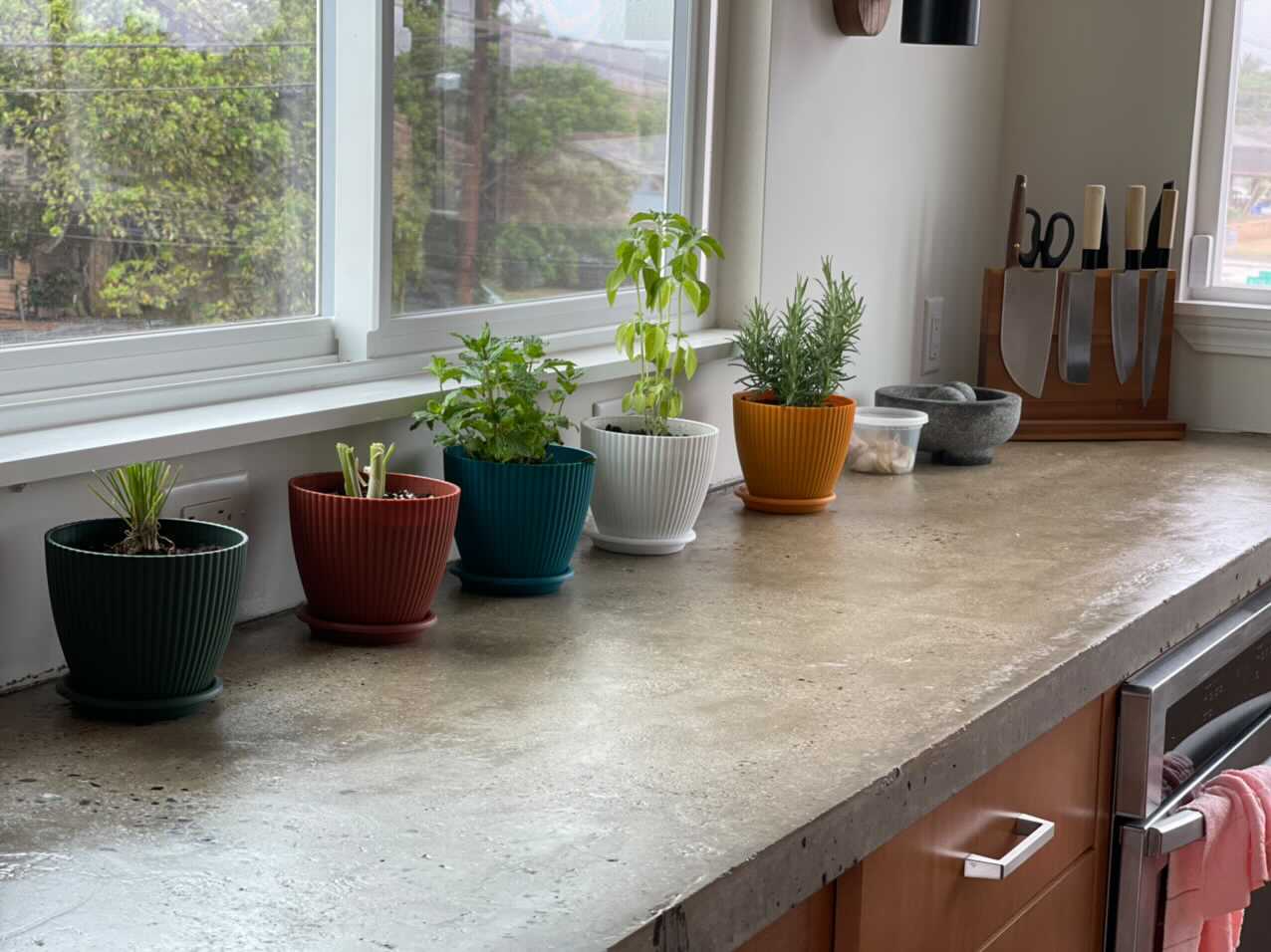
Concrete Countertop DIY – A Beautiful Mess
DIY White Concrete Countertops – Clover Lane
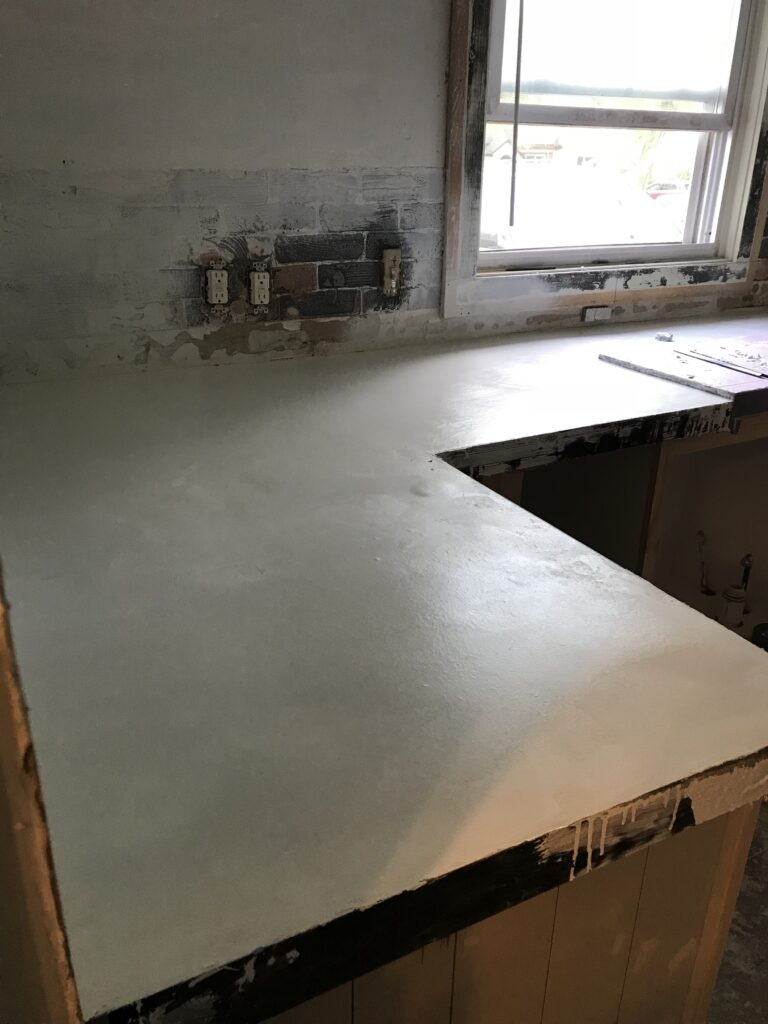
How to Build a Concrete Countertop
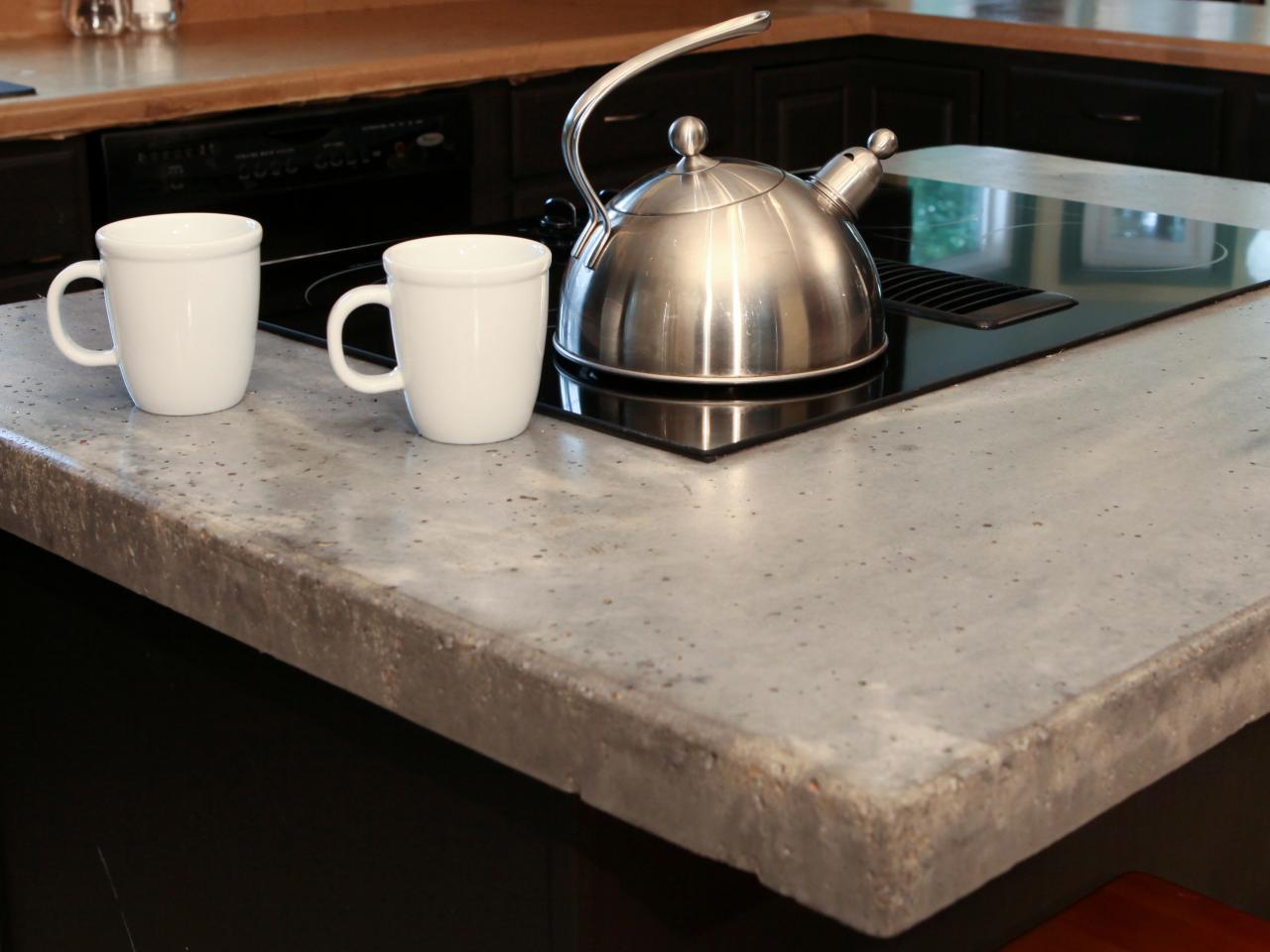
Related articles:
- How To Stain Concrete Countertops
- DIY Concrete Countertop Mix
- Concrete Countertops Made Easy
- Concrete Countertop Overlay
- Black Concrete Countertops
- Marble Look Concrete Countertops
- Light Grey Concrete Countertops
- Concrete Countertop Design Ideas
- Light Colored Concrete Countertops
- Epoxy On Concrete Countertop
